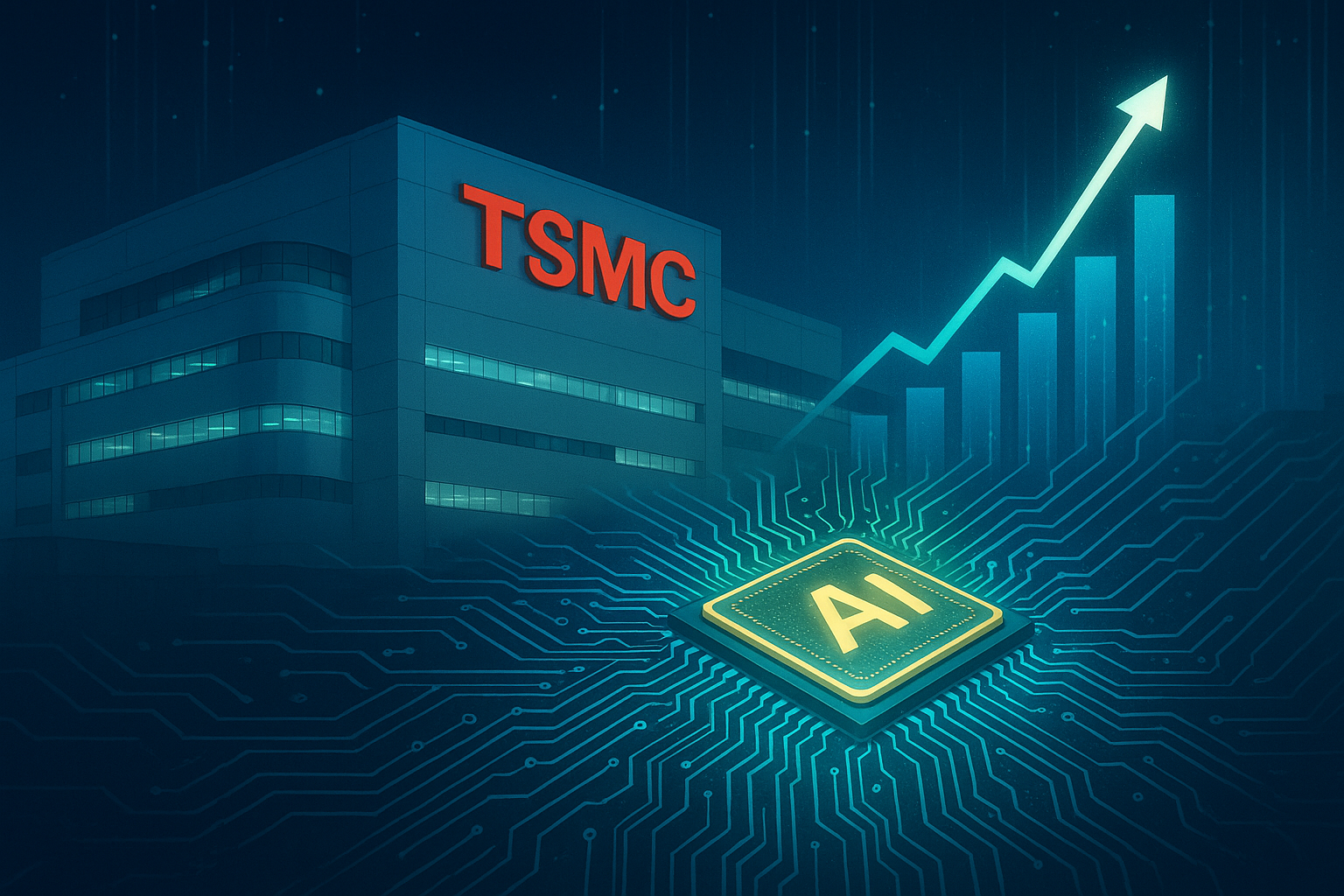When a company like TSMC (Taiwan Semiconductor Manufacturing Company) posts a nearly 40 % jump in its net profit thanks to the AI boom, it’s not just good headlines — it’s a signal. For tech watchers, investors, and anyone following the semiconductor supply chain, this tells a story of momentum, leverage, and pressure points ahead.
What Happened: The Numbers Behind the Surge
In Q3 2025 — the three months ending September — TSMC reported a net profit of NT$452.3 billion, up about 39.1 % year-on-year, shattering expectations.
Revenue also climbed, roughly 30 % higher than the same period a year ago.
That’s an eye-catching bump, and it’s no random blip. The driving force: surging global demand for semiconductor chips driving AI workloads — data centers, training models, inference chips — all of it.
TSMC, as the leading “pure-play” foundry, has positioned itself to reap these gains.
Why the AI Boom Fuels Such Growth
The AI boom isn’t just a buzzword. It’s a capital-intensive, hardware-thirsty revolution. A few dynamics at play:
- Higher ASPs & premium nodes: The more advanced the chip (smaller nanometer, high throughput), the higher the price. Clients building AI accelerators, GPUs, or custom inference silicon tend to pay up.
- Strong utilization & economies of scale: TSMC’s fabs run at high capacity. More utilization means more profit per wafer.
- Long-term client commitments: Big tech (like Nvidia, Apple, AMD) lock into multi-year deals, giving TSMC revenue visibility.
- R&D edge and technological moat: TSMC’s investment in cutting-edge nodes (3 nm, 2 nm) gives it leverage to stay ahead.
This is not windfall luck — TSMC is capturing the structural shift toward compute-heavy workloads.
Risks Lurking in the Boost
Even a 39 % profit jump can mask hidden dangers. Here’s what could trip them up:
1. Trade policy and tariffs
As the U.S. pushes to onshore more chip production, TSMC faces geopolitical pressure. Export restrictions or tariff adjustments could bite margins.
2. Currency and inflation
TSMC sells many chips in U.S. dollars, while costs (labor, materials) are often in NT dollars or local currencies. Exchange rate swings or inflation can erode gains.
3. Overdependence on a few customers
If principal buyers pull back (say, less AI capex next cycle), revenue could compress.
4. Technological competition & execution risk
Staying at the frontier (2 nm, EUV, defect management) is hard. Missteps are costly.
5. Supply chain constraints
Materials, equipment, power, water — each poses bottlenecks. Taiwan’s water and energy stability are nontrivial.
What This Means for Stakeholders
For investors
This result solidifies TSMC’s dominance. It justifies premium valuation multiples if growth continues. But the risks above mean the upside is not frictionless.
For AI/compute companies
Securing capacity in TSMC’s fabs is now a strategic imperative. Late movers may struggle to find room.
For regions and governments
The surge underscores why nations want domestic chip sovereignty. Many will double down on subsidies and incentives to lure fabs.
For supply chain players
Equipment makers, raw material suppliers, EDA tool providers—all ride this wave. Their order books just got a boost.
Outlook: Can the Run Continue?
TSMC isn’t resting. It foresees Q4 revenue growth of up to 24 %.
Its capital expenditure plan remains aggressive (tens of billions USD) to expand capacity and diversify geographic risk.
But projections are now accompanied by disclaimers. Expect volatility from trade developments, currency swings, and macro cycles.
If AI demand keeps rising (and compute arms races continue), TSMC has the infrastructure, reputation, and client base to stay in pole position. Yet even market leaders can stumble — so execution and adaptability will matter more than ever.
Final Thoughts
When you see a headline that “Taiwanese chipmaker TSMC sees nearly 40 % jump in its net profit thanks to the AI boom,” take note — the headline is accurate, but the full story is richer.
This jump isn’t just about numbers; it’s about structural shifts in computing, supply chains, and geopolitical stakes. TSMC is capitalizing on the AI boom, but it’s also navigating a minefield of risk.
For readers following tech, investing, or the future of semiconductors, this is a moment worth watching: structural strength meeting accelerating demand — but under pressure from multiple fronts.


